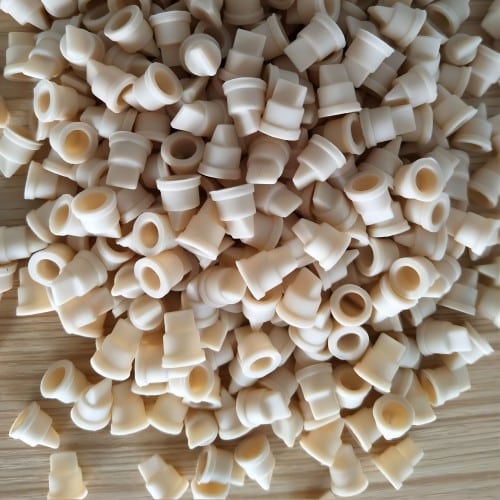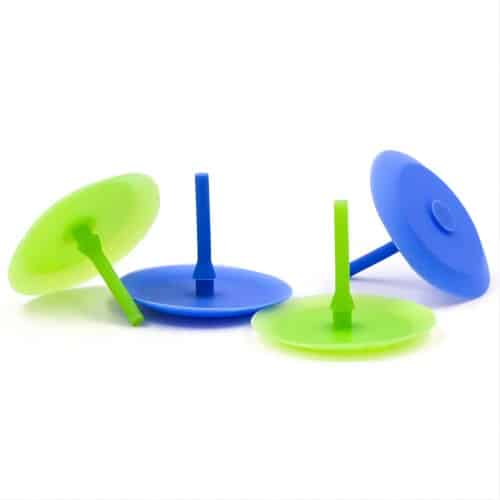Medical check valves are essential parts of many applications in the life sciences and healthcare. By ensuring that fluids only flow in one direction, these devices guard against contamination, incorrect dosages, and mechanical failure caused by backflow. We will look at the many kinds of medical check valves, their uses, and how they strengthen the effectiveness and safety of medical procedures in this thorough guide.
What is Medical Check Valve?
Medical check valves, which are produced to permit only one direction of fluid flow through a system while hindering reverse flow, serve as essential components in the medical field. This feature is essential in many medical applications, ranging from complex life support systems to intravenous therapy.

The valves prevent contamination or dosage errors that may result from backflow and ensure the effective and safe delivery of drugs, nutrients, and gases. Medical check valves, through directional control of fluids, are essential in enhancing patient care’s safety and accuracy in a wide range of healthcare settings.
Introduction of Silicone Medical Check Valve
Medical check valves made of silicone are specialized equipment used in the healthcare sector to precisely and consistently command fluid flow. These valves, which are made of medical-grade silicone, are incredibly flexible and work with a variety of biological fluids and drugs. Since they do not react with the fluids they control due to their inert nature, they are excellent for sensitive applications like IV infusion setups, drug delivery systems, and implantable devices. Due to silicone’s distinctive qualities—such as its biocompatibility and resistance to temperature changes—silicone medical check valves are the building block of choice for applications where strict durability and cleanliness standards must be encountered. This ensures constant, reliable service, which is crucial to patient safety and efficient healthcare.
How Many Types of Silicone Medical Check Valves?
• Duckbill Check Valves
Because of their distinctive duckbill-shaped design, duckbill check valves got their name. They can provide tight sealing against backflow and minimal resistance to flow in the forward direction because of their design. They are often used in applications that call for low pressure and a small amount of space.

• Umbrella Check Valves
A dome-shaped membrane on the umbrella check valve opens when forward pressure is introduced and shuts tightly when the pressure is released. Applications needing minimal flow resistance and quick reaction to pressure changes are ideal for this kind.
• Diaphragm Check Valve
The flexible diaphragm of a diaphragm check valve opens in response to forward pressure. They are useful in systems needing extreme precision, like intravenous therapy, and are well-known for their ability to stop backflow.
• Ball Check Valves
A ball is positioned inside a sealed chamber in a ball check valve. When fluid presses against the sealing seat, the ball moves away from it, permitting flow. Backflow is essentially halted when the flow is interrupted by gravity or a spring returning the ball to the seat. These valves can withstand higher pressures and are robust.
• Swing Check Valves
A swinging disc or flap is used by swing check valves to open with forward flow and close with reverse flow. Due to their mechanical complexity, they are less common in silicone form, but they remain popular in larger applications.
The Comparison Among Various Materials of Medical Check Valves
Medical check valves are made from a range of materials, each with unique characteristics that are proper for various medical uses. When selecting the ideal check valve for a given set of medical requirements, it can be extremely crucial to comprehend the differences between these materials. The following contrasts the typical materials found in medical check valves:
Due to its superior chemical inertness and biocompatibility, silicone has become commonplace in the medical industry. Because it doesn’t react with bodily fluids or medications, it’s perfect for uses where it comes into direct contact with the body, like implantable devices and catheters. Furthermore, silicone valves have a high degree of flexibility, which promises a tight seal and dependable operation under many different conditions.
(2) PVC, or polyvinyl chloride
Another material that is frequently used for medical check valves is PVC, and this is valued for both its affordability and durability. PVC is suitable for disposable medical devices like IV infusion sets due to it has a low risk of leaching and good resistance to a wide range of chemicals, regardless of not being as flexible as silicone. However, because of worries about plasticizer migration, PVC is generally less appealing for long-term implantable devices.
(3) Polypropylene (PP)
The superior mechanical and chemical resistance of polypropylene are highly valued. PP check valves are robust, fatigue-resistant, and able to stand up to several sterilization cycles without becoming brittle. This qualifies them for reusable medical devices that need to fulfill strict durability and hygienic requirements. Moreover, polypropylene lacks silicone’s flexibility, which can be problematic for applications where extremely tight seals must be achieved.
(4) Polytetrafluoroethylene, or PTFE
Teflon, also known as PTFE, is widely recognized for having a low coefficient of friction and remarkable chemical resistance, which keep valve components from sticking or clogging. Applications such as analytical and laboratory devices, where purity and non-reactivity are crucial, frequently employ PTFE. In comparison to other polymers used in medical valves, PTFE is typically more expensive, regardless of providing outstanding reliability in harsh chemical environments.
There are benefits and drawbacks to each of these materials. The material selection for a medical check valve will be based on the particular demands of the application, such as chemical compatibility, pressure requirements, anticipated lifespan, and whether the device will need to be used temporarily or permanently.
What Are the Medical Applications of Silicone Check Valves?
Because silicone check valves have special qualities like biocompatibility, flexibility, and resistance to chemicals and temperatures, they are widely used in medical applications. In systems where unidirectional flow control is critical to ensuring efficiency and safety, these valves are indispensable. The following are some of the main medical uses for silicone check valves:
• Intravenous Treatment (IV)
In IV therapy systems, silicone check valves are frequently employed to stop blood from flowing backward into the IV line. This is crucial for keeping the area sterile and ensuring that fluids or medication are given effectively without running the risk of contamination.
• Pumps for Infusion
Silicone check valves in infusion pumps control how much medication and nutrients patients receive. They make sure the delivery occurs at the proper pressure and rate, preventing backflow that can result in improper dosage.
• Anesthesia Supplies
In anesthesia machines, check valves regulate the gas flow, guaranteeing that patients obtain appropriate mixtures during surgery. Silicone’s chemical resistance and flexibility make it perfect for handling a variety of gases without degrading.
• Devices for Respiratory Care
The directional control of airflow in devices like ventilators and CPAP (Continuous Positive Airway Pressure) machines is made possible by silicone check valves. They aid in sustaining steady pressure and keep tainted air out of the system.
• Dialysis Units
Silicone check valves are used by dialysis machines to regulate the flow of dialysis fluid and blood. These valves ensure that the fluids only mix inside the dialyzer’s controlled environment, preventing cross-contamination and preserving the dialysis process’ effectiveness.
• Cardiac Encourage Equipment
Ventricular assist devices (VADs) are a kind of cardiac assist devices that use silicone check valves. They are important in directing blood flow and guaranteeing that the apparatus functions appropriately, assisting the heart’s pumping action without resulting in reverse blood flow.
• Urinary catheters
Silicone check valves in urinary catheters aid in stopping urine backflow, lowering the risk of UTIs, and providing patient comfort and hygiene.
These uses indicate the value of silicone check valves in medical devices, where their chemical makeup greatly enhances the performance, safety, and dependability of the equipment. The durability and functionality of these medical instruments have been enhanced by the use of silicone, which ultimately leads to better patient care and treatment outcomes.
How to Select the Right Silicone Medical Check Valve for Equipment?
When choosing the appropriate silicone medical check valve for a specific piece of equipment, there are several important considerations to make. The use of the proper valve not only guarantees peak performance but also increases the security and efficiency of medical equipment. This is a detailed guide that will help you choose a suitable silicone medical check valve for your medical equipment:
1. Recognize the prerequisites for the application
Make sure you understand the precise requirements of the application before choosing a check valve. Think about the fluid type (liquid or gas), flow rate, required pressure, and any problems with chemical compatibility. For example, the valve needs to be specially made to be able to withstand high-pressure settings without failing if it is going to be used in one.
2. Assess the Compatibility of Supplies
Make sure silicone is the right choice for the particular medical application, even though it tends to be resistant to a wide range of chemicals and temperatures. Determine if the silicone check valve will come into contact with any liquids that could eventually work together with its integrity. Applications needing non-toxicity and biocompatibility are best suited for silicone.
3. Examine Mechanism and Design of Valve
There are many different kinds of silicone check valves, including duckbills, umbrellas, diaphragms, and ball check valves. Every design has unique characteristics and advantages. Duckbill valves, for instance, have a reputation for their dependability and simplicity and are perfect for low-pressure applications. Select a design that best fits your device’s operating requirements and fluid dynamics.
4. Assess Fit and Size
For optimal performance, the check valve must be sized appropriately. An excessively large or small valve may fail to operate properly, cause leaks, or incur more wear and tear. Make sure the valve of your choice fits the assembly precisely by taking into account the dimensions of the current system components.
5. Review the Situation in Operation
Take into account the operational and environmental factors that the valve will encounter, such as unexpected fluctuations in temperature and probable sterilization procedures. Without deterioration or loss of performance, the selected silicone check valve should be able to withstand these circumstances.
6. Conformity to Regulations and Quality
Make sure the silicone check valve satisfies every relevant regulation and quality standard, particularly those that apply to medical devices, such as FDA biocompatibility guidelines and ISO 13485 for medical device quality management systems.
7. Certification and Reputation of Manufacturers
Choose a valve from a reliable vendor understood for offering top-notch medical parts. If the supplier’s standard valves don’t suit your specific needs, find out if they offer customization options. Furthermore, make sure the supplier certifies the products, attesting to the fact that they adhere to all relevant safety and medical requirements.
8. Evaluation of Performance
It is advisable to perform or review performance testing using manufacturer data before making the final selection. Aspects such as flow rate, pressure drop, and leak tightness should be tested to make sure the valve operates as intended under expected operating conditions.
By giving these things careful thought, you can select the silicone medical check valve that best suits your needs in terms of efficiency, dependability, and compatibility with your equipment, which will ultimately improve patient care and device performance.
Medical check valves are essential for providing vital protection against the dangers of fluid backflow in medical equipment, thus rendering them invaluable in the healthcare industry. By choosing the appropriate valve for a given medical application, one can ensure patient safety, effectiveness, and dependability by being aware of the different kinds of medical check valves and their uses. Medical check valves have the potential to significantly boost the efficacy and safety of medical treatments when correctly chosen and preserved.
